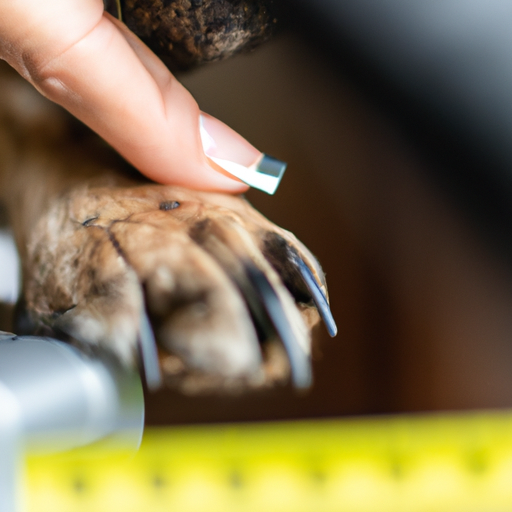Understanding Your Dog’s Nails
Your dog’s nails are more than just a part of their paw. They’re a crucial aspect of their overall health and wellbeing. Just like us, dogs can feel discomfort or pain when their nails are too long.
A healthy nail should have a slight curve and not touch the ground when your dog is standing. If your dog’s nails click on the floor or they’re having trouble walking, it’s likely time for a trim.
Signs of Overgrown Nails
Here are five key signs that your dog’s nails might be too long:
- Clicking Sounds: If your dog’s nails make a clicking sound when they walk on hard surfaces, this is a clear indication that their nails are too long.
- Altered Gait: A dog with long nails may alter its gait to avoid pain. This can lead to posture issues and discomfort.
- Visible Discomfort: If your dog appears uncomfortable or starts to chew at their nails, this could be a sign of overgrown nails.
- Nail Curling: Overgrown nails can curl around and dig into the paw pad, causing serious pain and infection.
- Bleeding or Swelling: If your dog’s nails are bleeding or their paws are swollen, seek immediate veterinary attention.
The Impact of Overgrown Nails on Your Dog’s Health
| Health Impact | Details |
|---|---|
| Joint Pain | Overgrown nails can cause your dog to change the way they walk, leading to joint pain or even arthritis over time. |
| Infections | Nails that are too long can curl back into a dog’s paw pad, leading to painful infections. |
| Physical Injury | Overgrown nails are more prone to splitting or breaking, which can cause significant pain and can be difficult to treat. |
How to Trim Your Dog’s Nails
Trimming your dog’s nails might seem daunting, but it’s a straightforward process once you know the steps. Here’s a quick guide:
- Prepare the right tools. You’ll need a dog nail trimmer and a styptic powder in case of any accidental bleeding.
- Calm your dog and get them comfortable with the trimmer.
- Identify the quick – a sensitive, dark area inside the nail. Avoid cutting this area.
- Trim a small amount of the nail at a time, always cutting from underneath and at an angle.
- If you accidentally cut the quick, apply styptic powder to stop the bleeding.
- Reward your dog after the process to associate nail trimming with positive experiences.
FAQ
Q: How often should I trim my dog’s nails?
A: Usually, a monthly trim is sufficient. However, it greatly depends on how quickly your dog’s nails grow.
Q: What should I do if my dog is scared of nail trimming?
A: Try associating nail trimming with positive experiences like treats. If your dog is still anxious, consider seeking professional help.
Q: Can I use human nail clippers on my dog?
A: It’s not recommended as human clippers can crush the nail and cause pain or injury.
Remember, your dog’s nails are an essential part of their health. Keep an eye on them and trim as necessary to keep your furry friend comfortable and healthy.



